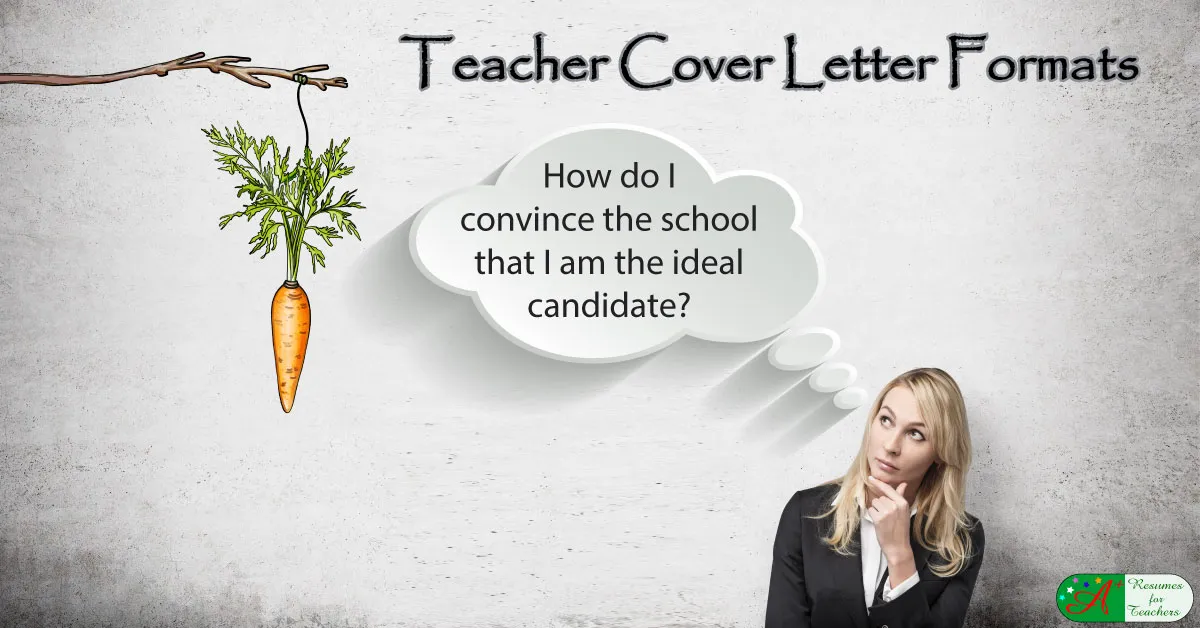The Importance of a Well-Formatted Teacher Cover Letter
A well-formatted teacher cover letter is more than just a formality it is a crucial tool that can significantly impact your job application. It serves as your introduction, providing the hiring committee with a first impression that either sparks interest or causes them to move on to the next applicant. In the competitive field of education, where numerous candidates vie for each position, the format of your cover letter can be the deciding factor in whether your application is even considered. The format helps you structure your thoughts and present information in a clear, concise, and easily digestible manner, demonstrating your professionalism and attention to detail, which are highly valued qualities in educators.
Why Format Matters in a Teacher Cover Letter
Impact on First Impressions
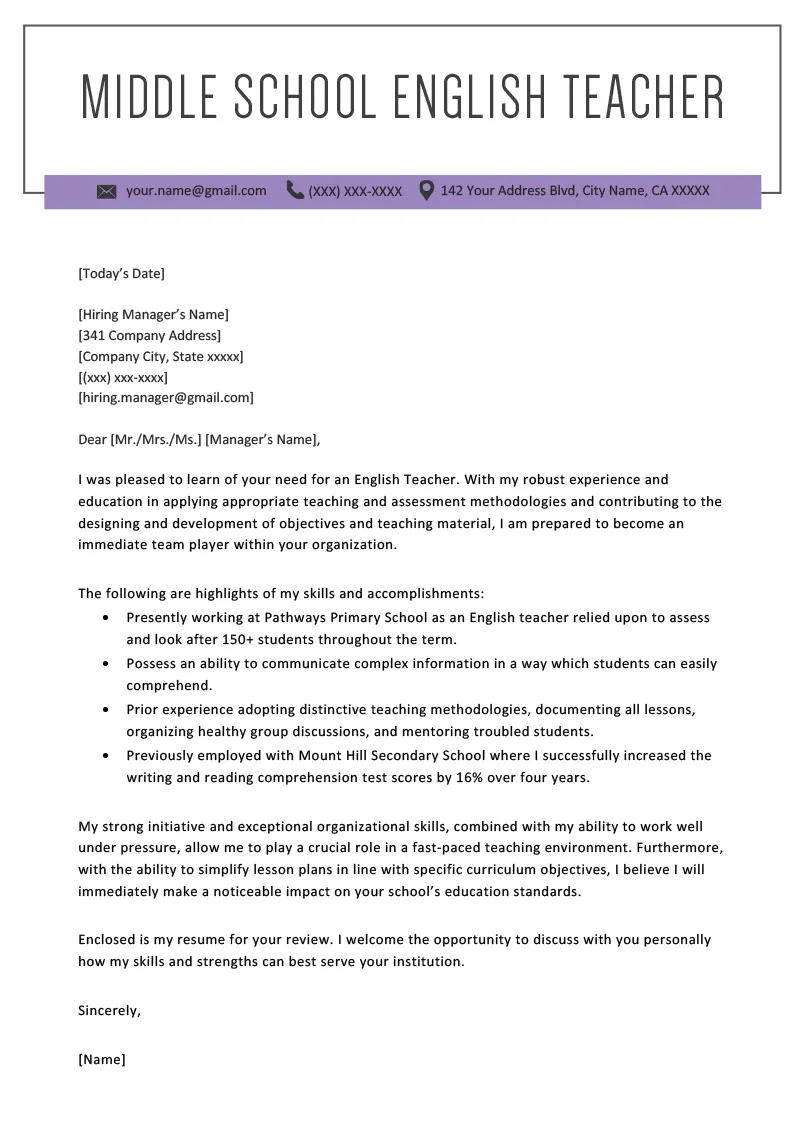
The first impression created by your cover letter is critical. A clean, organized layout immediately conveys professionalism and competence. A poorly formatted letter, on the other hand, suggests a lack of attention to detail and a lack of respect for the recipient’s time. The layout and presentation make it easy for a reader to quickly grasp the key details.
Highlighting Professionalism and Attention to Detail
A well-formatted cover letter demonstrates that you understand the importance of clear communication and are meticulous in your work. These qualities are essential for a teacher who must communicate effectively with students, parents, and colleagues. A cover letter that adheres to proper formatting standards reflects a commitment to excellence and attention to detail, traits that are highly desirable in an educator.
Tip 1: Proper Heading and Contact Information
The heading of your cover letter is the first element a reader sees, and it sets the tone for the entire document. It should include your name, address, phone number, and email address. Ensure that this information is accurate, clearly presented, and easy to read. It’s also crucial to include the date, and the recipient’s name and address if you know them, or the hiring manager’s title and the school’s address, if the name is unknown. This shows that you have taken the time to research the school and position.
Essential Header Elements
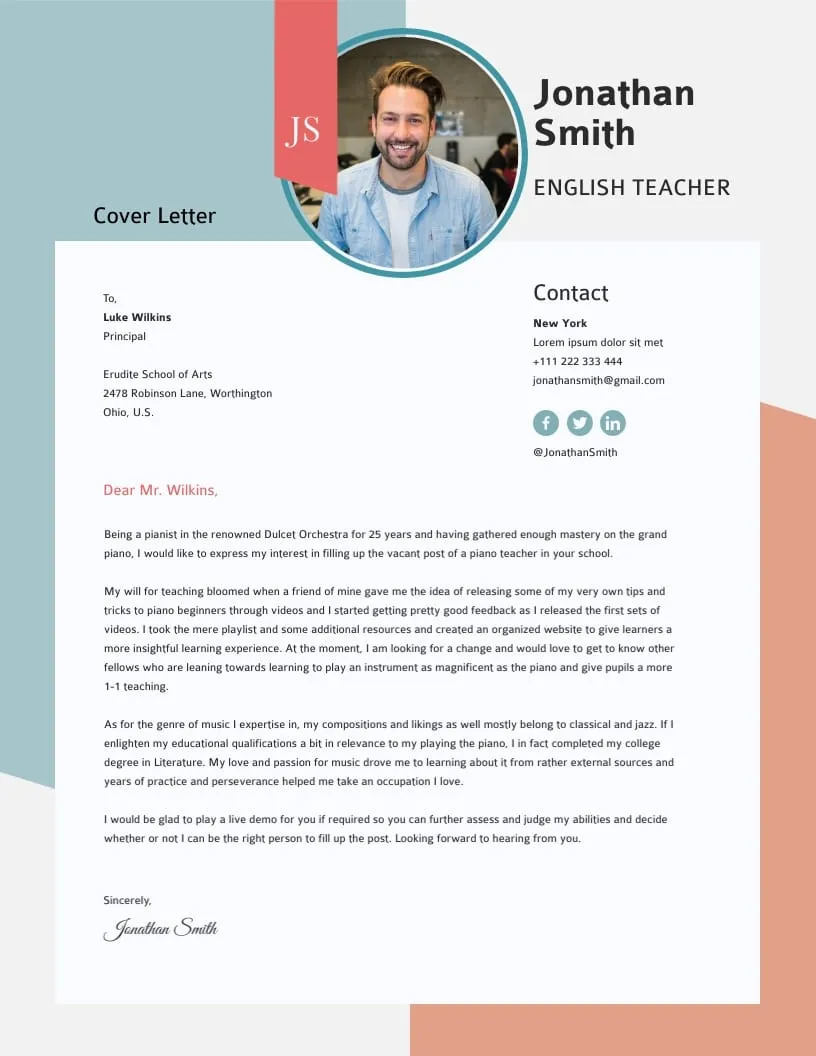
Your header should be clear, consistent, and professional. Use a standard font size (e.g., 10-12 points) and a font that is easy to read, such as Times New Roman, Arial, or Calibri. Use consistent formatting throughout. Avoid using unusual or overly decorative fonts, as these can detract from the professional appearance of your cover letter.
Formatting the Date and Recipient Information
The date should be placed just below your contact information. Include the full date (month, day, and year). If you know the recipient’s name and title, address your letter to them directly; this personalized approach demonstrates initiative. If you’re unsure of the recipient’s name, address the letter to the Hiring Manager or the relevant department, followed by the school’s address.
Tip 2: Strong Opening Paragraph
The opening paragraph is where you make your first pitch. It should immediately capture the reader’s attention and explain why you’re writing. Begin by stating the position you’re applying for and where you saw the advertisement. Immediately after this, include a brief statement of your qualifications and skills and how they align with the school’s needs. Avoid generic opening statements; instead, aim for a concise and compelling introduction that highlights your enthusiasm and suitability for the role. Show the recipient that you’ve taken the time to research their needs.
Crafting a Compelling Introduction
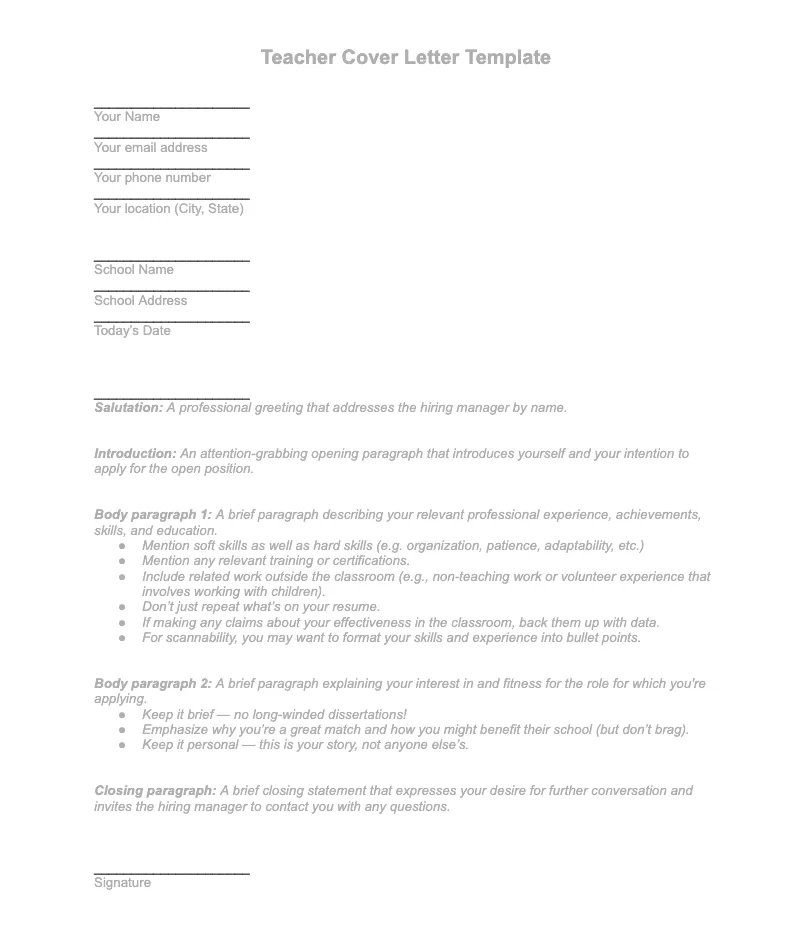
Make your opening paragraph memorable by highlighting your enthusiasm and demonstrating your awareness of the school’s specific needs. Start with a strong statement about why you are interested in the position and the school. Then, briefly summarize your key qualifications and how they match the school’s requirements. Always tailor your introduction to the specific job and school to show that you have thoroughly researched the opportunity.
Mentioning the Specific Position and School
Always mention the specific teaching position you’re applying for and the name of the school or district. This demonstrates your focus and attention to detail. Refer to the job title exactly as it appears in the advertisement and if possible, show that you understand the school’s mission, values, or any recent initiatives. This shows your genuine interest and increases the likelihood that your application will stand out.
Tip 3: Tailoring the Body Paragraphs
The body paragraphs are where you provide details of your skills and experiences. The goal here is to highlight your accomplishments and explain how your qualifications align with the specific requirements of the job. Structure your body paragraphs logically, using clear topic sentences to introduce each point. Support each statement with specific examples, data, and quantifiable achievements whenever possible. Demonstrate how your skills have benefited your students or previous schools.
Showcasing Relevant Skills and Experience
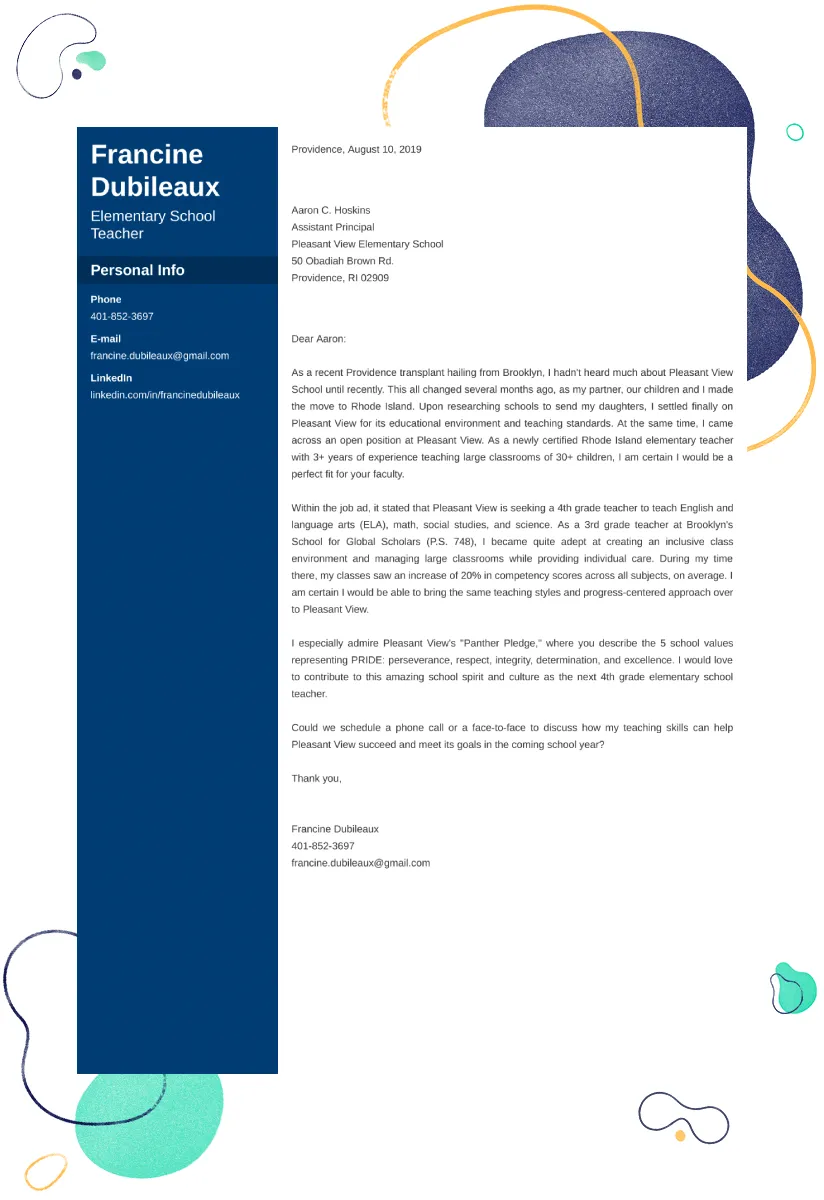
Carefully select and highlight the skills and experiences most relevant to the position. Study the job description and match your qualifications to the listed requirements. Include specific examples of how you have demonstrated those skills in previous roles. Use the same keywords and phrases that are used in the job description to show you meet the criteria.
Using Action Verbs to Describe Achievements
Use strong action verbs to describe your accomplishments. Instead of saying, “I was responsible for,” use action verbs like “Implemented,” “Managed,” “Developed,” “Created,” “Led,” or “Achieved.” This makes your descriptions more dynamic and engaging. Action verbs help create a vivid picture of your abilities and accomplishments, making your cover letter more persuasive and memorable.
Quantifying Accomplishments Whenever Possible
Whenever possible, quantify your achievements. Use numbers and data to demonstrate the impact of your work. For instance, instead of saying “Improved student test scores,” say “Increased student test scores by 15% through targeted intervention strategies.” Quantitative data provides concrete evidence of your effectiveness and makes your claims more credible and impactful. For example, did you increase parent engagement, reduce disciplinary issues, or improve classroom efficiency?
Tip 4: Effective Closing Paragraph
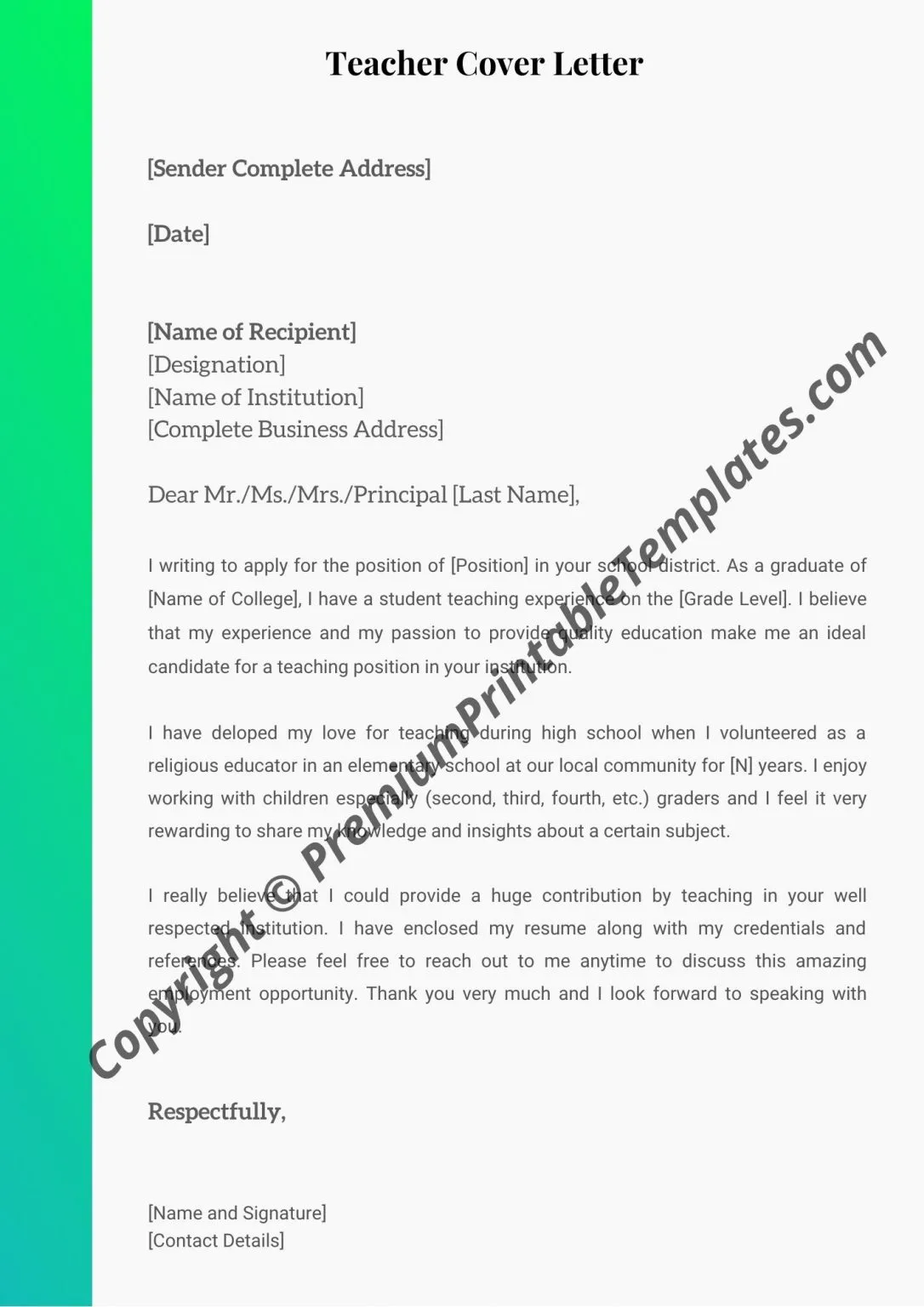
Your closing paragraph should leave a positive final impression and reiterate your interest in the position. Express your gratitude for the reader’s time and consideration. Reaffirm your enthusiasm for the opportunity. The closing paragraph is your last chance to connect with the reader and leave a lasting positive impression. A strong closing will make you memorable.
Reiterating Interest and Expressing Gratitude
Reiterate your strong interest in the position and your enthusiasm for the school. Thank the reader for their time and consideration. This shows respect and helps foster a positive relationship with the hiring committee.
Including a Call to Action
Include a call to action that encourages the reader to take the next step, such as scheduling an interview. State that you are available for an interview at their earliest convenience and provide your contact information. This shows confidence and helps facilitate the hiring process. Make it as easy as possible for the hiring manager to contact you.
Tip 5: Proofreading and Editing Meticulously
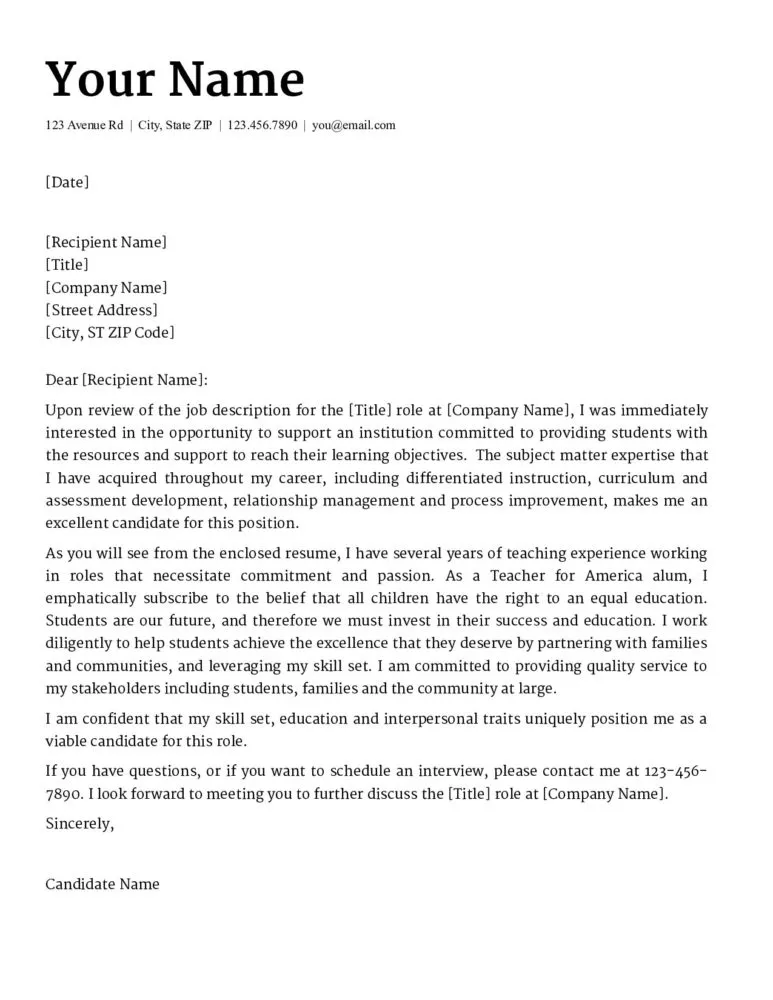
Proofreading and editing are critical steps to ensure your cover letter is polished and professional. Errors in grammar, spelling, or punctuation can undermine your credibility and suggest a lack of attention to detail. Ensure your cover letter is free of mistakes. Get a second pair of eyes to check your work.
Checking for Grammar, Spelling, and Punctuation Errors
Thoroughly proofread your cover letter for any errors in grammar, spelling, and punctuation. Use spell-check, but don’t rely on it alone, as it can miss context errors. Read your cover letter aloud to catch any awkward phrasing or unclear sentences. A well-edited cover letter showcases your professionalism and attention to detail, improving your chances of being noticed.
Ensuring a Professional Tone Throughout
Maintain a professional tone throughout your cover letter. Avoid slang, colloquialisms, and overly casual language. Your writing should be clear, concise, and respectful. Avoid any negative comments about previous employers or colleagues. Focus on positive aspects of your skills and experiences. A professional tone enhances your credibility and makes a positive impression on the hiring committee.
